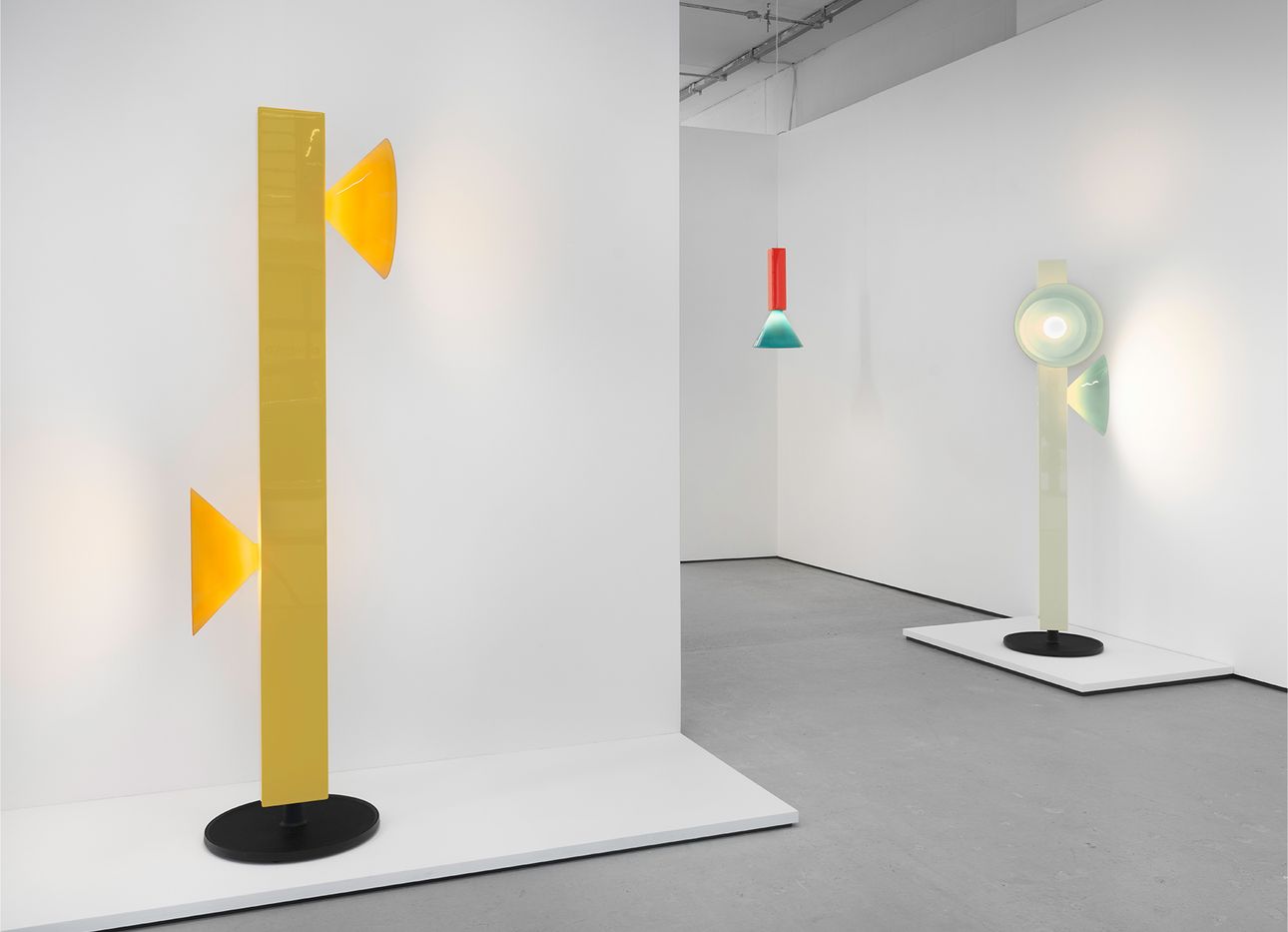
For Designers Edward Barber and Jay Osgerby, the Cone Is “Perfect Geometry”
A cone is a many-splendored shape. Both aesthetically pleasing and functional, it can do everything from redirect traffic to hold a scoop of ice cream. For British designers Edward Barber and Jay Osgerby, the form is one they regularly return to in their work, which began in 1996—when they co-founded their studio, Barber Osgerby, after studying architecture together at the Royal College of Art, in London—and involves a constant exploration of color and materials through the products and furniture they’ve made for brands including Vitra, B&B Italia, and Knoll.
The duo’s current exhibition, “Signals,” on view through March 26 at the London outpost of Galerie Kreo, a furniture gallery that commissions limited-edition pieces from top designers such as Virgil Abloh and Jasper Morrison, presents a series of lighting fixtures that put the cone at center stage. Cones are “perfect geometry,” Barber said in a statement. “They are the ideal shape to transmit and receive information. They invite engagement.”
In a variety of floor, wall, and pendant lamps, Barber and Osgerby pair conical glass shades with boxy aluminum bases, each in a different color. The shades were mouth-blown by master artisans from Venini, the historic glass company located on the Italian island of Morano, and have a delicate, translucent quality. Their hues vary according to the thickness of the glass and change further when switched on, as light spreads through the form like a blossoming flower. On the floor lamps, the shades can be rotated, and their lights dimmed, to set the mood.
Beyond the cone, the collection’s juxtaposition of soft and angular shapes references another concept that Barber and Osgerby explore in their work, which often combines technological innovations with traditional processes performed by hand. “There’s a tension between the industrial and the artisanal elements of the lamps, which we call ‘engineered craft,’” Osgersby says. “We’re always trying to work in this space between the sketch and the machine.”